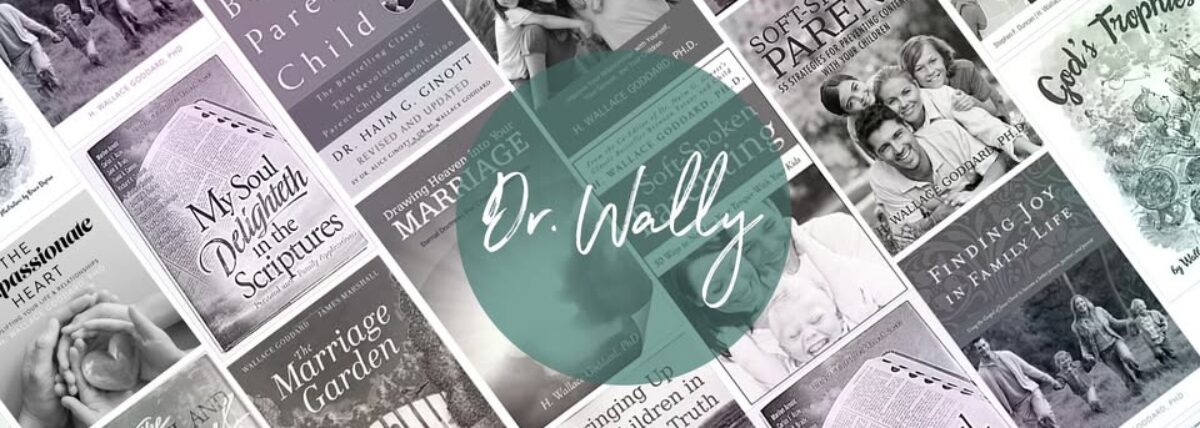Marriage is like combining two halves of a house to make one home.
Imagine that a person has many friends in the construction industry. When it comes time to make a new home, he calls a couple of his buddies who make prefabricated homes. He asks each of them to send him their best half-home. They ask for specs but he says: “Just send me your favorite half.” He doesn’t specify size, style, or layout.

 So one builder sends a sleek, modern half that is intended to be part of a contemporary structure. The other sends half of a geodesic home that is efficient and practical.
So one builder sends a sleek, modern half that is intended to be part of a contemporary structure. The other sends half of a geodesic home that is efficient and practical.
When the two halves arrived at the site, the halls do not line up. The roofs do not match. There are two kitchens and two living rooms but no bedrooms. The electrical, plumbing, and heating are not compatible. The styles are jarringly different.
Marriage is much like that construction challenge. Two people are built in different “factories” (or families) with different tastes, traditions, styles, preferences, and experiences. Neither family coordinates with the other in the creation of their half of a family-to-be. They just build things their way.
One family is loud, exuberant, and expressive. The other is quiet and avoidant. One family is relaxed, the other is exacting. One family is rigorous in their religious practices, the other is more casual. One loves sports and informality. The other is more serious and task-oriented.
When two people come together from two very different backgrounds, the challenges in connecting the two halves into a functioning whole are immense and continuing. We do not create a well-connected home overnight.
The challenges are also often unexpected. We imagine that, coming from two good LDS families, we have almost everything in common. Yet one partner thinks that a rousing political argument at the dinner table counts as family home evening while the other wants hymns, quiet reflection, and healthy snacks. The different perspectives on holidays, affection, food, time-use, chores, money, and communication seem quite insurmountable. Further, the differences between marriage partners are not due simply to their different families of origin. They also have different personalities, different values, and different sets of experience.
Nothing in the dating experience prepares us for the vast surprises in combining two people from different traditions into one cohesive, functioning family. The only solution is to activate powerful gospel processes. Only then can we hope to create a successful family.
The first key to combining the two halves is humility—the openness to other people’s ways of doing things. There is a tendency to believe that our way of doing things is the best way or the right way. I recommend that we become good private investigators. When our spouses do something that does not make a bit of sense to us, we might ask ourselves, “I wonder what that means to my spouse?”
Here is a great truth: People do what they do for reasons that make sense to them. When their actions do not make sense to us, it is because we don’t understand them. We can judge them or we can seek to understand. The spouse who takes time to understand the partner’s logic has a good start for connecting the two sides of the house.
A person who loves tidiness believes that cleanliness is next to godliness. The person who creates a junkyard wherever they are may see themselves as creators or savers. Each preference has its logic. And, if we are humble, we will be able to discern and honor our differences rather than condemn them.
Of course, we can, as Gottman recommended, start a dialogue with our unresolvable differences. We can make good-natured jokes about her love of order or his passion for tools. We laugh about the ways our different styles create surprises in our lives. This is compassion—the willingness to look kindly on someone who—like us—is afflicted with quirky fallenness.
The other key to managing our persistent differences is positivity—the willingness to keep our focus on what is good, admirable, and loveable. Van Wyck Brooks issued the invitation: “How delightful is the company of generous people, who overlook trifles and keep their minds instinctively fixed on whatever is good and positive in the world about them. People of small caliber are always carping. They are bent on showing their own superiority, their knowledge or prowess or good breeding. But magnanimous people have no vanity, they have no jealousy, and they feed on the true and the solid wherever they find it. And, what is more, they find it everywhere.” (Brooks, V. W. (1948). A Chilmark Miscellany. New York: E. P. Dutton & Co., p. 6)
So the jarring differences between the two halves of our marriage can lead to frustration, contention, and discord. Or they can lead to amusement, patience, and charity. Every time we choose to use humility, compassion, and positivity, we choose to create a strong home.
Application:
We all feel irritation in marriage. The difference between successful and unsuccessful relationships depends on what we do with that irritation. Notice your irritation with your spouse. Become a private investigator; see if you can figure out the logic behind your spouse’s choices. Then apply compassion; find appreciation for that point of view. Then keep your focus on the many things you love about your partner. Try it. It will make a difference.
Invitation:
The perspective of marriage as a God-given and character-building enterprise is the focus of my book, Drawing Heaven into Your Marriage. It recommends gospel thinking and covenants as the path to relationship success.
